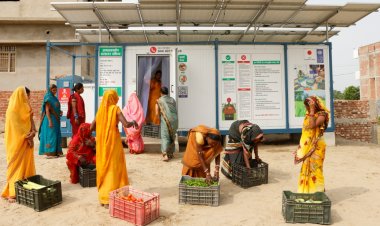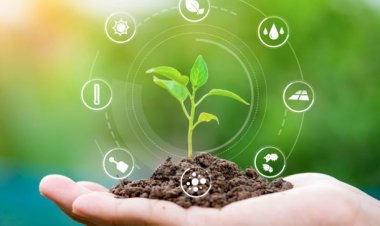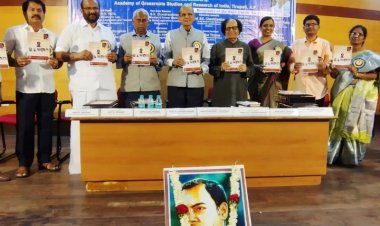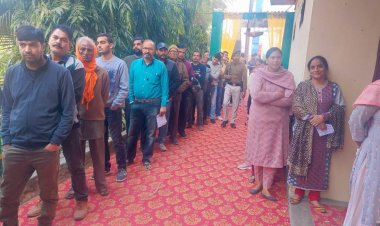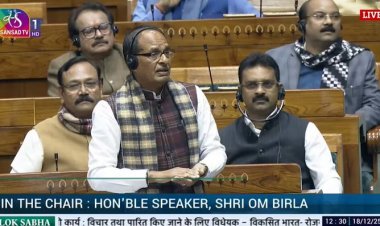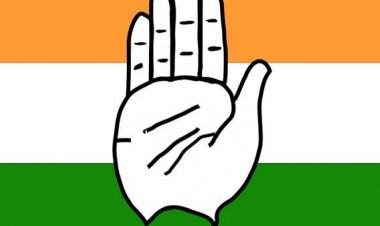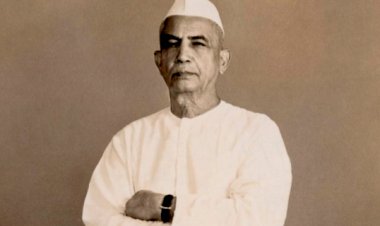Access to safe drinking water is welcome, but sustainability is key to Har Ghar Jal
The Prime Minister announced that 52 per cent of rural households had access to safe tap drinking water on their premises. It is a welcome development. However, the sustainability aspect of the drinking water supply needs to be given careful thought. The sustainability of the supply of water depends on the ownership of the community. Decisions will have to be made by Panchayats acting as Institutions of Self-Government in the real sense.
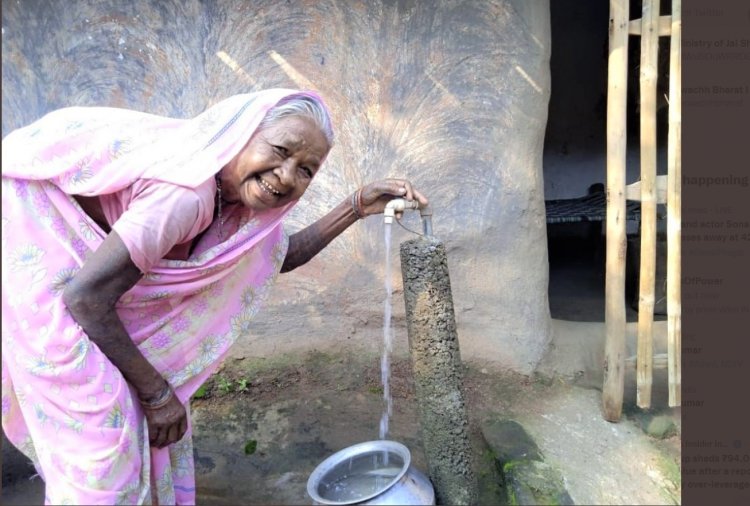
On August 20, the HT published that the Prime Minister announced that 52 per cent of rural households had access to safe tap drinking water on their premises. It is a welcome development. However, the sustainability aspect of the drinking water supply needs to be given careful thought.
Safe drinking water is one of the important basic needs of the people. It is said that ‘water is life’ as it is the sine qua non for holistic human development. India has a large share of the global human plus livestock population whereas it has only 2 per cent land mass and 4 per cent of global freshwater resources. Estimates given in the table below show that the problem of drinking water availability is getting more and more serious with every passing decade. The per capita annual freshwater availability, which was 5,177 cubic metres in 1951, would likely be scaled down to 1,140 cubic metres in 2050, if the existing trend continues.
Availability of Drinking Water in India
|
Year |
Per capita annual freshwater availability (in cubic metres) |
|
1951 |
5177 |
|
2011 |
1545 |
|
2019 |
1368 |
|
2025 |
1293 |
|
2050 |
1140 |
Source: Adapted from Jal Jeevan Mission, Operational guidelines for implementation, M/o Jal Shakti, 2019
Further, the yawning demand-supply gap has been complicated by other challenges like depletion of groundwater via over-extraction, poor recharge, low storage capacity, erratic rainfall due to climate change, water contaminants, poor operation and maintenance (O&M) of water supply systems, etc.
It was decided under the Jal Jeevan Mission in 2019 that piped water will be supplied to all of India's roughly 192mn rural households by 2024. When this was announced, only about one-sixth of the households had Har Ghar Nal Se Jal. This has now soared to 52 per cent within a very short spell of time. This information came to light through a video conference by the Prime Minister at an event in Goa to mark 100 per cent piped water supply coverage in rural households of the state. Among the many landmarks, the programme has so far linked 8,65,000, i.e. 84.2 per cent of all, government schools in the country with a tap water connection, while 8,94,000 anganwadi centres, i.e., more than 60 per cent, have been covered, according to official data.
This is a welcome step as one of the basic necessities is being given via pipeline. It is a luxury for the common men living in huts and kutcha houses. But the pace of progress of the next half of the programme will be critical to meeting its national deadline, as complex engineering hurdles in some of the most challenging terrain will need to be overcome. The scale at which states work to provide piped drinking water to the remaining roughly 92mn households is the key, because implementation is squarely in the hands of states, as mentioned in the HT.
The financial commitments of states matter too. The Union government has earmarked Rs 3.5 lakh crore for the mission. The fund-sharing pattern between the Centre and the States under the mission is 100 per cent for Union territories (UTs) without legislature, 90 : 10 for northeastern states and UTs with legislature, and 50 : 50 for all other states. There are also Rs 26,900 crore additional funds available under the award of the 15th Finance Commission as grants to rural local governments precisely for water and sanitation projects. Studies also revealed that the health of human beings improved with the improvement of access to safe drinking water supply. Further, as per the National Centre for Disease Control, cases of water-borne diseases have come down by 66 per cent, from 17.7mn to 5.9mn, between 2019 and 2021 in areas provided with clean drinking water.
If we comment on the present status, we find that Punjab, Gujarat, Himachal Pradesh and Bihar are among the states with over 90 per cent coverage and are fast progressing towards Telangana, Goa, Dadra and Nagar Haveli and Daman and Diu for their targets. However, in some states, progress is skewed and needs attention. For instance, the coverage across Uttar Pradesh and Jharkhand is still below 25 per cent, while states such as Chhattisgarh, MP, West Bengal and Rajasthan are among 13 lagging states, now categorised as "focus states".
Piped water supply is nothing new because the State Governments have been implementing rural water supply programmes to provide safe drinking water to the rural population since Independence. As part of the Minimum Needs Programme, the Government of India started supporting States through the Accelerated Rural Water Supply Programme (ARWSP) in 1972. Since then, the Government of India has been supporting states by taking numerous initiatives to provide water access to every rural household. Seeing the importance of water, the SDGs have one of their objectives to ‘enable all households to have access to and use safe and adequate drinking water within premises to the extent possible', which was proposed to be achieved by 2030.
Supplying piped water to each and every rural household has been a challenging task. Some lessons have been learnt from the work done so far. These are: (i) inadequate investments for capital formation and operation & maintenance (O&M) led to incomplete or defunct water supply systems. Generally, poor maintenance of schemes led to investments going waste. (ii) Dependence on groundwater, which has already been used excessively for agricultural purposes, led to systems not serving the full design period. (iii) Source sustainability measures such as aquifer recharge, rainwater harvesting, increased storage capacity of water bodies, reservoirs, de-silting, etc. improve the lifespan of water supply systems. (iv) Consumers are willing to contribute if assured service delivery of water is provided. (v) Community ownership leads to more capital formation and proper maintenance of the water supply system.
Sustainability of uninterrupted water supply
So many resources, both directly under water supply and through convergence fashion, have been at the disposal of states and sub-state levels for taking various activities and functions so that people would get safe drinking water. For construction and O&M, a fleet of engineers, officials, contractors, elected representatives of Panchayati Raj Institutions (PRIs) and labourers are engaged in a mission that will involve, in all, laying of nearly 4mn km of pipelines.
It has emerged from the experiences of the implementation of the rural water supply scheme that the sustainability of the supply of water depends on the ownership of the community. If the community is engaged in planning, implementation, management, and O&M of the water supply system, there would be smooth functioning of the water supply. But the million-dollar question before the mission is: Do villagers assume themselves as a community? Are villagers considered owners of the water supply system? I think not entirely. Because community and ownership are not institutionalised. There is a reference made to the 73rd amendment and its implementation while water supply is discussed. But the issue is: Whose raj prevails in the villages — people’s raj or officer’s raj? My experiences show that the latter holds sway. Where is the community in the village? It might have been there earlier, but today the entire village has been divided severely on caste and class basis. We have to think of new avenues, new ways and methods for people’s participation.
The 73rd Amendment Act has elevated PRIs as Institutions of Self-Government (ISGs). In other words, Panchayats are local governments numbering about 2.50 lakh. And in them, more than 30 lakh people are working as members and chairpersons at different levels. Panchayats as ISGs should enjoy at least 3Fs — functions that are well-defined, funds adequate to meet the requirements of functions devolved to them, and functionaries adequate to address various works. These institutions are also expected to prepare a plan for economic development and social justice including the 29 subjects listed in the 11th Schedule of the Constitution. Drinking water is also one of the subjects of the schedule. In other words, Panchayats are governments at their level.
What is their status? A Devolution Report of the year 2015-16 says that none of the states or UTs has achieved 100 per cent or complete devolution even after more than two-and-a-half decades of the enactment of the 73rd Amendment to the Constitution. It shows that there is no or very little concern of political leaders and bureaucrats for the empowerment of these institutions in enabling them to function as ISG in a real sense. Only one State (Kerala) has achieved three-fourths of the intended devolution. Only seven states, namely Kerala, Karnataka, Maharashtra, Tamil Nadu, Telangana, Sikkim and West Bengal, have achieved 50 per cent and above devolution in the country in practice. The three-dimensional study of the devolution of powers, authority and responsibilities from the State Governments/UTs to Panchayats revealed that except in the southern states, the empowerment of Panchayats has not been the priority of the State Governments.
When Panchayats have not been given their rightful share given in the Constitution, how can one think that they would exercise the ownership concept at the local level? The ownership should also be shown at the state and central levels by making them the local government with proper authority and power. Ownership at the village level and politics at the state and central levels is not practised in the Indian federal structure. That is why sustainability would remain elusive.
The sustainability issue in the Har Ghar Jal (HGJ) would remain even after 2024. In order to not repeat the earlier experiences in the implementation of water supply, Panchayats have to be empowered and made responsible. The three levels of Panchayats need to be networked horizontally and vertically. Institutions are complexes of norms, rules and behaviours which tend to persist in the real sense. Here, in the case of drinking water sustainability, Panchayats have to be institutionalised so that they emerge as local government. Such norms, rules and behaviour have to be institutionalised so that villagers assume that the O&M of the water supply system is one of their responsibilities.
Hence, if in the water sector, the process of formation of institutions is institutionalised, it will lead to sustaining the water supply in the countryside. Because O&M of the water supply system would then be the way of life for Panchayats. Decisions — how to go about the task, whether some committee is to be formed, whether more committees are to be formed, who would be employed and who would not be employed — would then be made by the Panchayats, which themselves would be the ISGs.
(The author is a former Officer of the Indian Economic Service and currently the President of the Karpa Foundation, Ghaziabad.)



 Join the RuralVoice whatsapp group
Join the RuralVoice whatsapp group



















